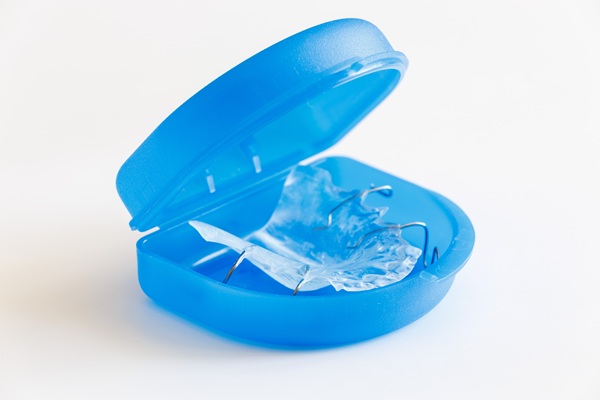 Metal braces have been used to straighten teeth for over a century and remain an efficient way to straighten teeth. These oral appliances work by applying constant pressure on your teeth, slowly improving their alignment over 12 to 36 months. The appliance is fixed in your mouth after a dentist installs it, and it stays in throughout the treatment.
Metal braces have been used to straighten teeth for over a century and remain an efficient way to straighten teeth. These oral appliances work by applying constant pressure on your teeth, slowly improving their alignment over 12 to 36 months. The appliance is fixed in your mouth after a dentist installs it, and it stays in throughout the treatment.
Braces have two main components: brackets that are cemented to each tooth on a dental arch and wires that are used to link the brackets. The tighter these wires are, the more force the appliance exerts on the patient’s teeth. Orthodontists typically adjust the tightness of the wires every four to six weeks during treatment.
What to expect when getting braces
A drawback associated with braces is the poor aesthetics. The appliance sticks out on the teeth and can lead to increased self-consciousness.
The aesthetics of braces have improved significantly in recent years. Ceramic braces can be used to treat many of the issues that metal braces are used for. They have the same components as metal braces, but the metal parts are swapped with tooth-colored ones, making it significantly harder to notice the appliance on a patient’s teeth. Clear aligners can also be used to straighten teeth, but these are not as effective at treating severe orthodontic issues caused by poor jaw positioning.
Braces are the only orthodontic appliances that can treat severe orthodontic issues caused by poor teeth or jaw positioning. Issues that braces can be used to fix include:
- Crossbites
- Overbites
- Underbites
- Overjets
- Spaces between teeth
- Crooked teeth
Orthodontists typically recommend braces for patients with severe orthodontic issues because they often lead to the best results. Treatment times are typically somewhere between 12 and 36 months.
The process
Depending on how closely spaced the patient’s teeth are, the dentist might put spacers between them about a week before installing the braces.
The orthodontist cleans the patient’s teeth before cementing the brackets on their teeth. Once their teeth are cleaned and dried, the orthodontist starts cementing brackets on the patient’s teeth with dental cement or glue.
Rubber bands are attacked to anchor the brackets down, and wires are used to link them. The tightness of the wires will be adjusted throughout the treatment to ensure the right amount of force is applied to the patient’s teeth.
The patient’s teeth should be properly aligned by the time the treatment is over. Most patients will have to wear a retainer afterward to keep their teeth in their new positions. Retainers are oral appliances that prevent teeth from reverting to their initial positions after teeth straightening treatments. They ensure patients get to keep their newly straightened smiles.
We straighten smiles
Do you have poorly aligned teeth? Our orthodontist can help with that. Call or stop by our Wayne clinic to learn more about how braces can be used to fix various orthodontic issues.
Request an appointment or call Wayne Orthodontics at 484-253-3020 for an appointment in our Wayne office.
Related Posts
When it comes to orthodontic therapy, there are solutions for everyone. Orthodontics covers a wide range of conditions, from minor to severe and everything in between. If you are unhappy with your smile, you should visit an orthodontist. There is a solution to repair your teeth, no matter what your concerns are. You can then…
Having orthodontic care makes a lot of sense in many situations. If you have crooked teeth or bite dysfunctions, this treatment may be right. Orthodontics can also be effective if you have gaps in your mouth or oddly shaped or worn teeth. The same is true for a crowded mouth. If you neglect to seek…
Choosing braces to correct your teeth can be an exciting and life-changing decision, but the process itself does not always go as planned. While discomfort and pain are not typical experiences with orthodontic treatment, there are many reasons you might feel uncomfortable throughout your journey towards straighter teeth – from being fitted to after you…


